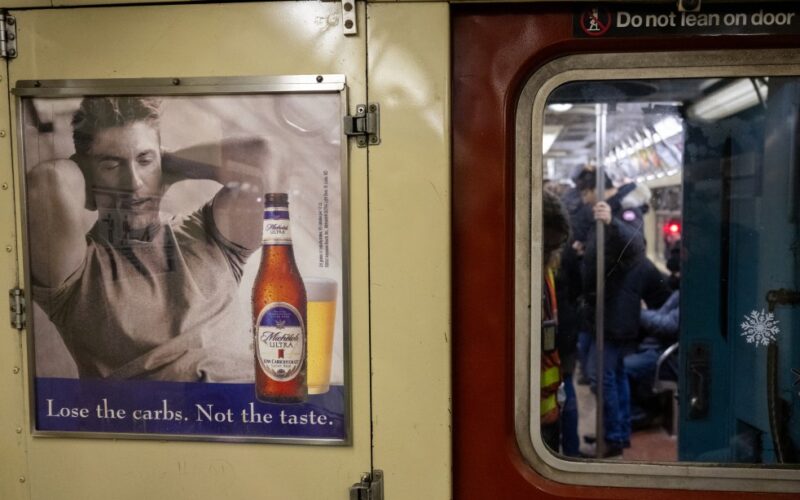The influence of alcohol extends to almost every part of society — and yet it causes more death and disease than any illegal drug.
Alcohol leaves its mark not all at once, but one person at a time. It’s a retired public servant who spent decades serving his city, now completely bed-ridden because of a preventable disease. A husband who gave up liquor years ago, dying of liver cancer and leaving behind an aging wife struggling to care for herself.
It’s an alcohol-impaired, multi-car crash collision that ends in needless deaths. Or a 30-year-old man in the ICU, whose body has begun to fail after drinking since his teens. These aren’t outliers. As health leaders, these are the faces of alcohol harm we see, and the lives we fight to save every day.
That’s why we were particularly shocked when in June, the MTA quietly reversed an almost decade-long ruling to now allow alcohol advertising on the subways and buses. This decision is a blow to New York’s already overburdened medical system — and it couldn’t come at a worse time.
In 2017, the MTA board took a necessary step to protect public health by officially banning alcohol advertising on subways and buses — a hard-won victory for New Yorkers of color, youth, and working-class riders already inundated with predatory marketing and its devastating health consequences.
In the years since, we’ve learned even more about alcohol’s dangers, including its role as a leading carcinogen, while our health care system struggles to meet the rising demand for addiction treatment. Yet despite the growing body of evidence, the MTA has reversed course, lifting its ban to pad its budget with new industry revenue.
Alcohol remains the most commonly used substance in the state, representing nearly 46% of treatment admissions. Excessive alcohol use already kills more than 8,000 New Yorkers each year, while alcohol-related treatment costs the state more than $843 per person annually, and more than $12.6 billion statewide.
So how does a substance so dangerous keep gaining ground?
Alcohol advertising is a historically racist and exploitative practice, flooding generations of Black and Brown residents with ads for high alcohol products. NYC’s liquor outlets are already concentrated in communities of color, a legacy of discriminatory redlining policies that segregated neighborhoods.
On public transit, alcohol ads disproportionately target those same riders, who according to the city comptroller’s office, make up 67% of commuters citywide. MTA users also tend to be lower income: on average, bus riders earn just under $29,000, while subway riders make around $40,000.
Before the 2017 ban, targeted alcohol ad campaigns placed thousands of New Yorkers of color at higher risk of harm. With their return to subways and buses, these ads now allow corporations to exploit the same people and expand their reach.
Simultaneously, abrupt federal policy changes further endanger New Yorkers’ health. In 2020 alone, Medicaid spending on alcohol-related claims accounted for $129 million. Now, 60 years out from the original Medicare and Medicaid Act, more than 1.3 million New Yorkers are at risk of losing coverage thanks to unprecedented federal budget cuts.
Take Phoenix House, for instance, where up to 90% of clients rely on Medicaid to pay for addiction treatment. For Medicaid-insured community members already in recovery, seeing new alcohol ads could send them into relapse, right as the necessary funding and health care supports begin to disappear.
We see the toll alcohol takes on people. Why should we risk the health and safety of New Yorkers to barely cover the MTA’s operating expenses?
In recent years, we have covered critical ground in reducing alcohol use: research shows that fewer young people are drinking alcohol with each year that passes.
However, alcohol ads drive youth to start drinking and contribute to binge drinking — the most common form of dangerous alcohol use that places people at risk for addiction, cancer, heart disease, suicide, sexual assault, and car accidents. By bringing back the same alcohol marketing campaigns, the MTA Board’s vote completely undermines this progress.
The MTA got this right seven years ago. We cannot allow new alcohol ads to erase the public health gains we have made since. The health and wellbeing of our city — and our ability to save patients’ lives — depends on it.
Foster is the president & CEO of Phoenix House of New York & Long Island. Kolod is a primary care physician for people who use drugs and alcohol.








